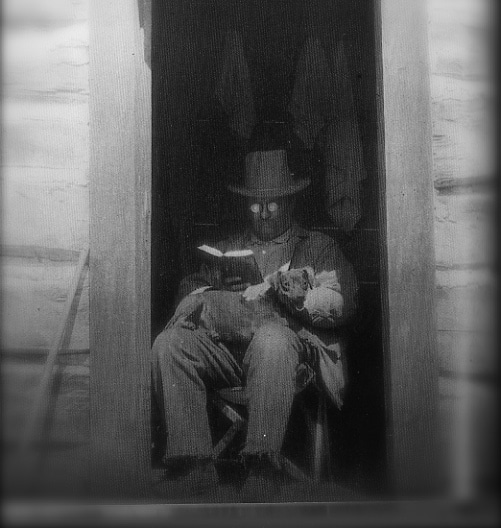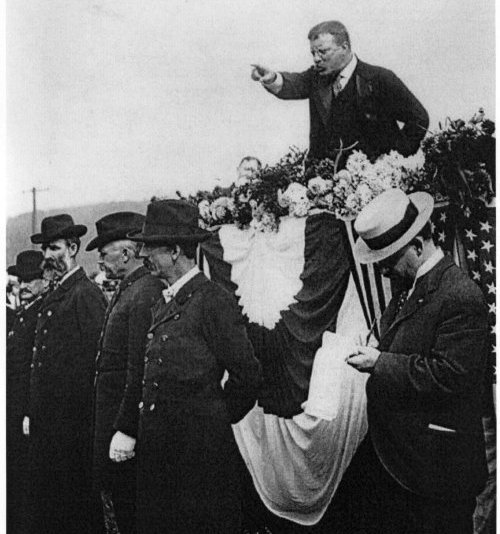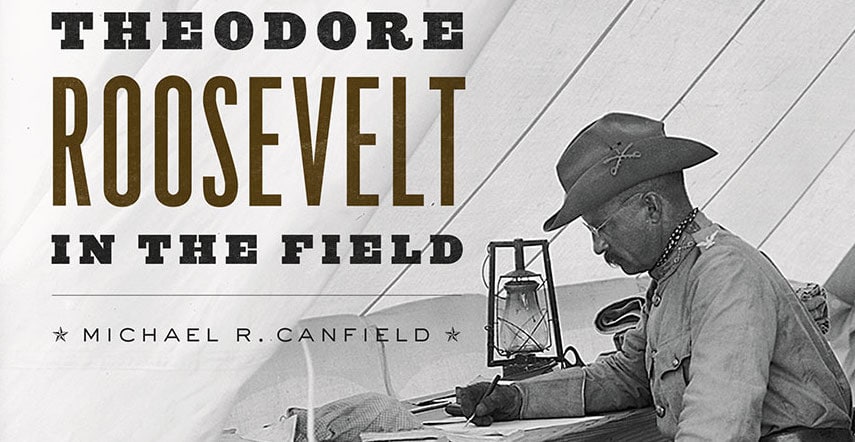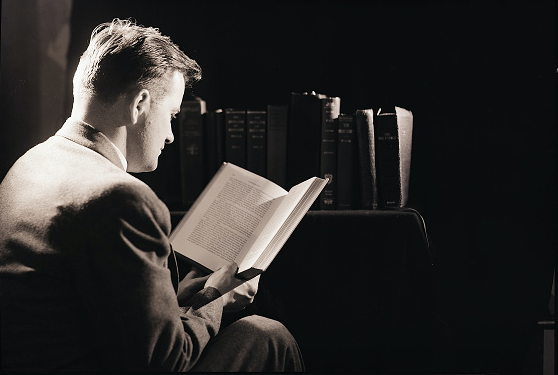
When Theodore Roosevelt did things, he did them with gusto. That included reading. Roosevelt was a voracious reader. The man devoured books like a damn hungry lion feasting on a fresh kill. While in the White House, he would read a book every day before breakfast. If he didn’t have any official business in the evening, he would read two or three more books plus any magazines and newspapers that caught his fancy. By his own estimates, TR read tens of thousands of books during his lifetime, including hundreds in foreign languages.
Roosevelt accomplished this feat because he knew how to speed read. Associates said he would would flip through two or three pages in a minute. Despite reading so quickly, Roosevelt could relate back in minute detail all of a book’s important points and even recite quotes from the text.
Being able to plow through so many books so quickly benefited TR’s leadership and influence. He easily connected with others as he could hold a conversation with anyone on any subject imaginable. Scientists were blown away with Roosevelt’s knowledge of complex theories, socialites were smitten with his witty insights about the latest piece by Oscar Wilde, and cowboys out West respected the “Eastern Dude’s” understanding of desert wildlife. TR’s life as a bionic book worm also provided plenty of grist for the 2,000 published works he turned out himself.
In this post we provide some suggestions and tips so you can start speeding reading just like Theodore Roosevelt. Are you ready to start devouring books with your brain? Let’s get started!
How to Speed Read
Stop subvocalizing by counting.When we learned to read, we usually read aloud and pronounced every single word that we saw in a line. This slows reading down considerably because you can only read as fast as you can talk. While you may long ago have graduated from Hooked on Phonics and transitioned to reading silently, you probably still subvocalize. Subvocalization is when you pronounce words with the voice in your head or larynx. You might even open your mouth silently as you read, sort of like a guppy (I do this sometimes and my wife makes fun of me for it).
Quitting the subvocalization habit can be hard. First try simply reading faster than your mouth can move or the voice in your head can speak. If that doesn’t work, try this technique: Repeatedly say “A-E-I-O-U” or count “1, 2, 3, 4” as you read the text. This will help train you to stop reading with your larynx and guppy lips and start reading with your eyes. This little trick can increase your speed in a matter of minutes.
Stop backtracking by using your finger. Backtracking slows many readers down. After reading a word, a person will read two or three more words, but then dart their eyes back to the first word. You probably do this without even realizing it. Watch someone read. You’ll see their eyes darting back and forth. Chances are they’re re-reading the same line over again.
To help you stop backtracking, use your index finger as a pace car. Underline the text with your finger at a pace faster than you normally read. Only look at the text in front of your finger; once you pass it with your finger, you can’t go back.
Use your peripheral vision. Your brain can comprehend several words at a time. You don’t have to read every single word by itself. The key with speed reading is to start reading multiple words at a time instead of just one at a time. To read chunks of text at a time, you need to start developing your peripheral vision. Here’s how:
Take a book and draw two parallel lines about three inches apart from each other down the middle of the text. Concentrate on the area between the lines and try not to move your eyes outside of them. See if you can catch the words beyond the lines in your peripheral vision. Being able to indirectly read words in this way will greatly increase your reading speed.
Another thing you can do to get in the habit of reading text in big chunks is to practice speed reading with newspapers. Newspaper columns typically measure 1.83 inches. You can only fit five to six words in that small space, thus providing you the perfect platform to master reading text by the chunk. Instead of reading word by word, try reading line by line. It takes some practice, but you’ll find yourself breezing through the local story about the cat that got stuck on the roof in a matter of seconds.
Train your eyes with free web apps. Several free web applications exist that help users stop backtracking and train their eyes and mind to read more than one word a time. Spreeder is my favorite. Simply copy and paste the text you want to speed read into Spreeder. Spreeder will then flash chunks of your text on the screen until it goes through the entire text. You can decide how many words Spreeder will show at a time and how fast you want the words to appear. I actually used Spreeder during law school to help me quickly read through cases. Not only was I able to get through assigned reading faster, I trained myself to stop backtracking and subvocalizing as well.
Try the z method. The idea that reading must be done linearly is a myth. Your mind is pretty dang amazing, and it can actually process and understand stuff even if you read it backwards. Take advantage of this by employing the z method. Basically the way this works is you start off on the first line and read it normally- left to right. Of course you’re not subvocalizing, and you’re not making any unneeded stops. When you get to the end of the first line, sweep your eyes from right to left diagonally across the second line until you get to the beginning of line three. Repeat this z pattern down the page.
You’d think you’d miss information by simply scanning across every other line backwards and diagonally. But try it for yourself. With practice, your brain will be able to pick up information backwards and in the periphery. Pretty dang amazing.
Know when to skim and scan. In addition to reading quickly, Roosevelt looked for places where he could skim and scan. In a letter to his son Kermit about the best way to read Dickens, Roosevelt said: “The wise thing to do is simply to skip the bosh and twaddle and vulgarity and untruth, and get the benefit out of the rest.” We can follow that advice for most things we read.
Not every word is important when conveying an idea. For example, articles like “a,” “an,” and “the” can be eliminated from most text, and you can still understand what is written. With practice you can train yourself to look over these unnecessary words and focus on the meaty stuff.
Another thing you can do to help focus on keywords is to skim through the book’s table of contents and section headings so you have a general idea of what the section is about. This will prime your brain to be on the look out for words related to the topic when you actually start reading.
Of course, the pleasure of some books is the masterful whole, the entirety of language and the author’s carefully selected words and purposefully constructed sentences. The joy of such literature comes in soaking up the text precisely as intended. In such cases, it’s best to slow down and take it in.
Listen to our podcast about Theodore Roosevelt, the reader and writer:







